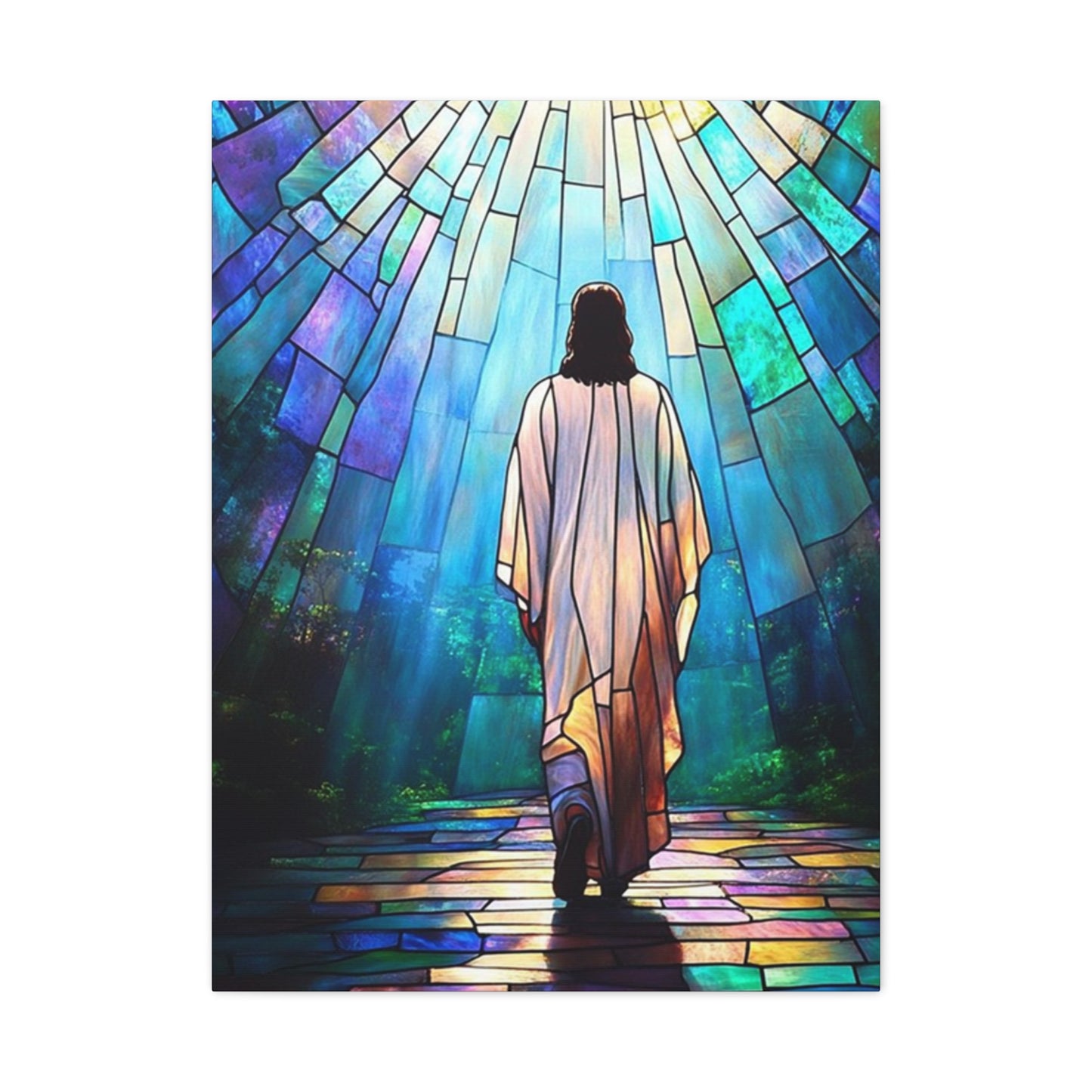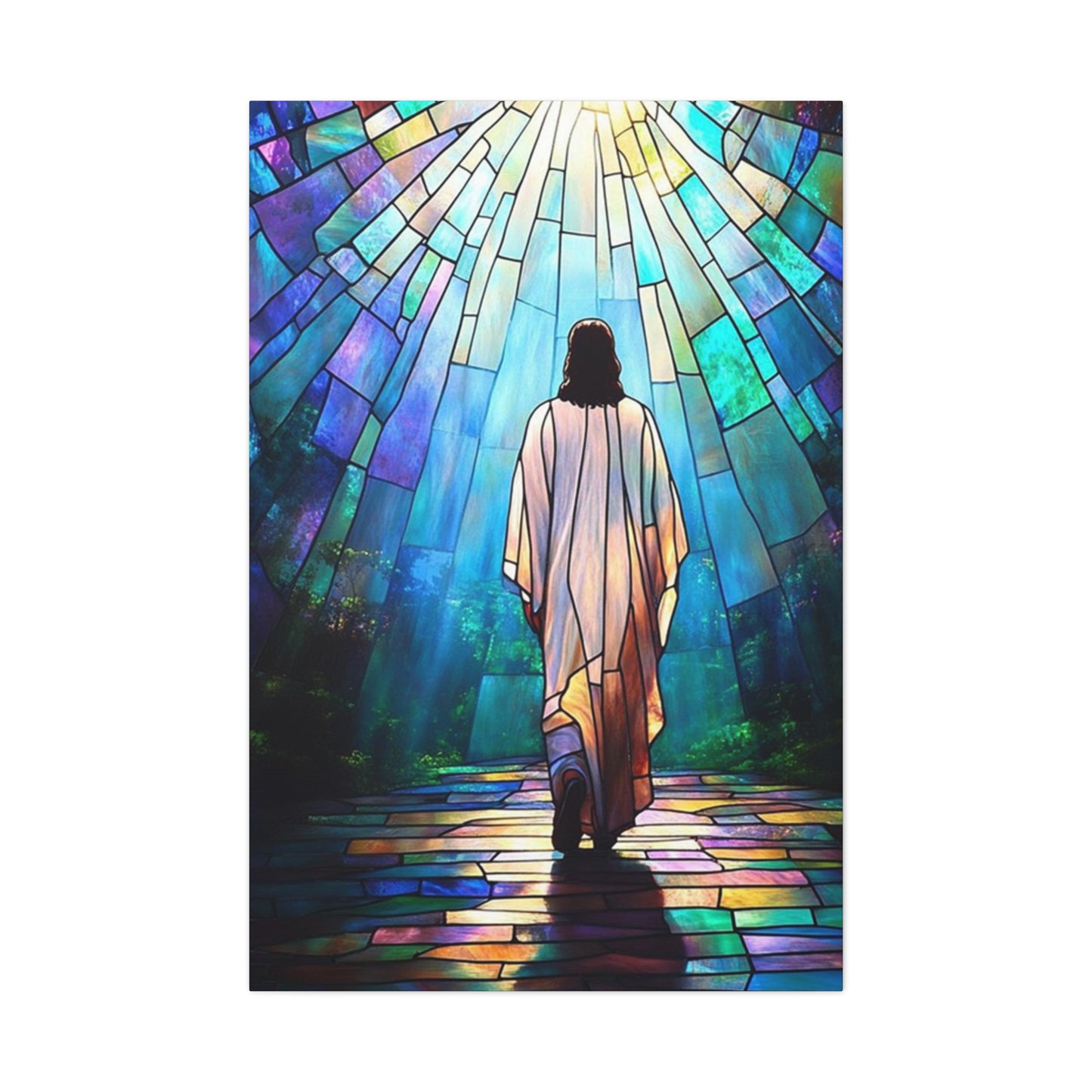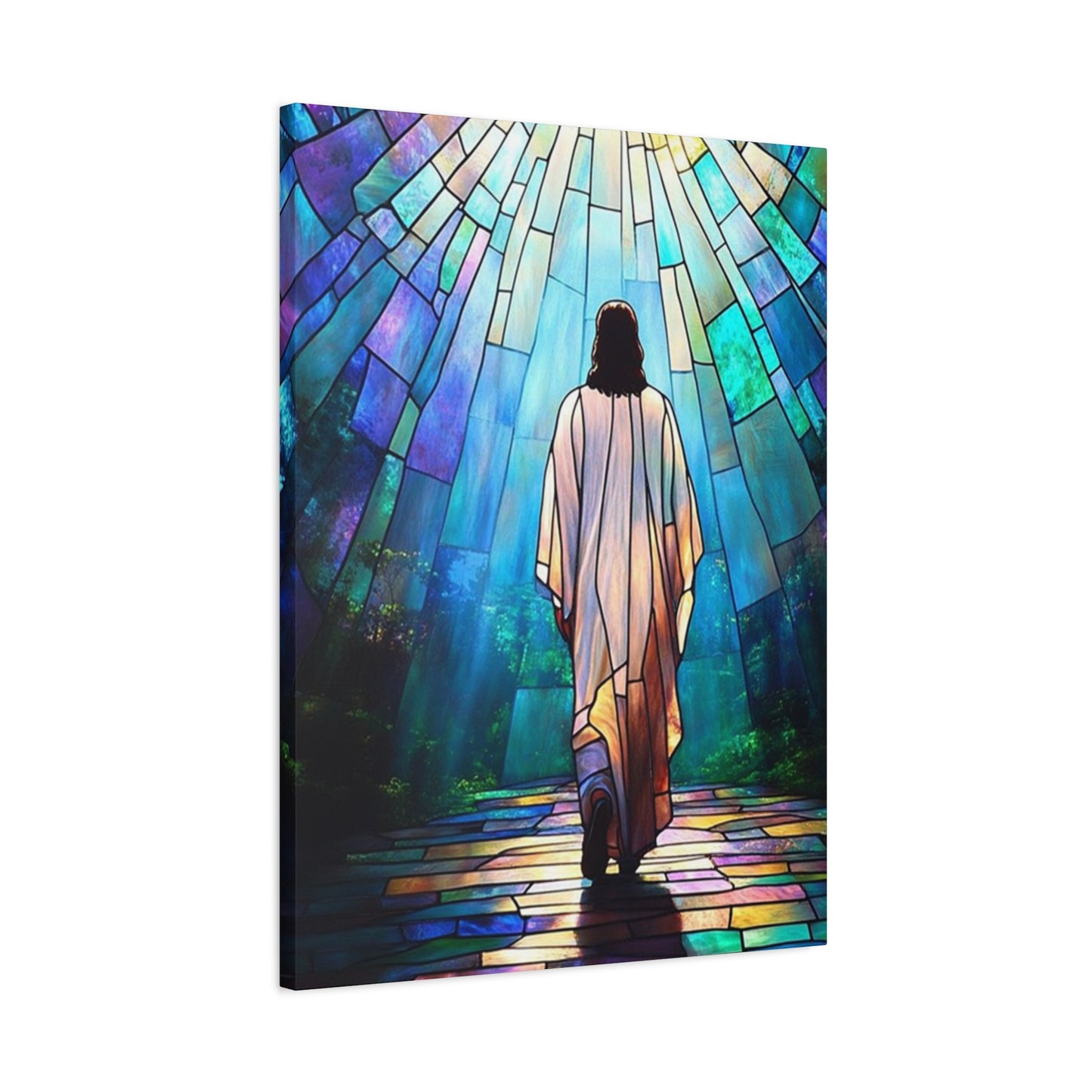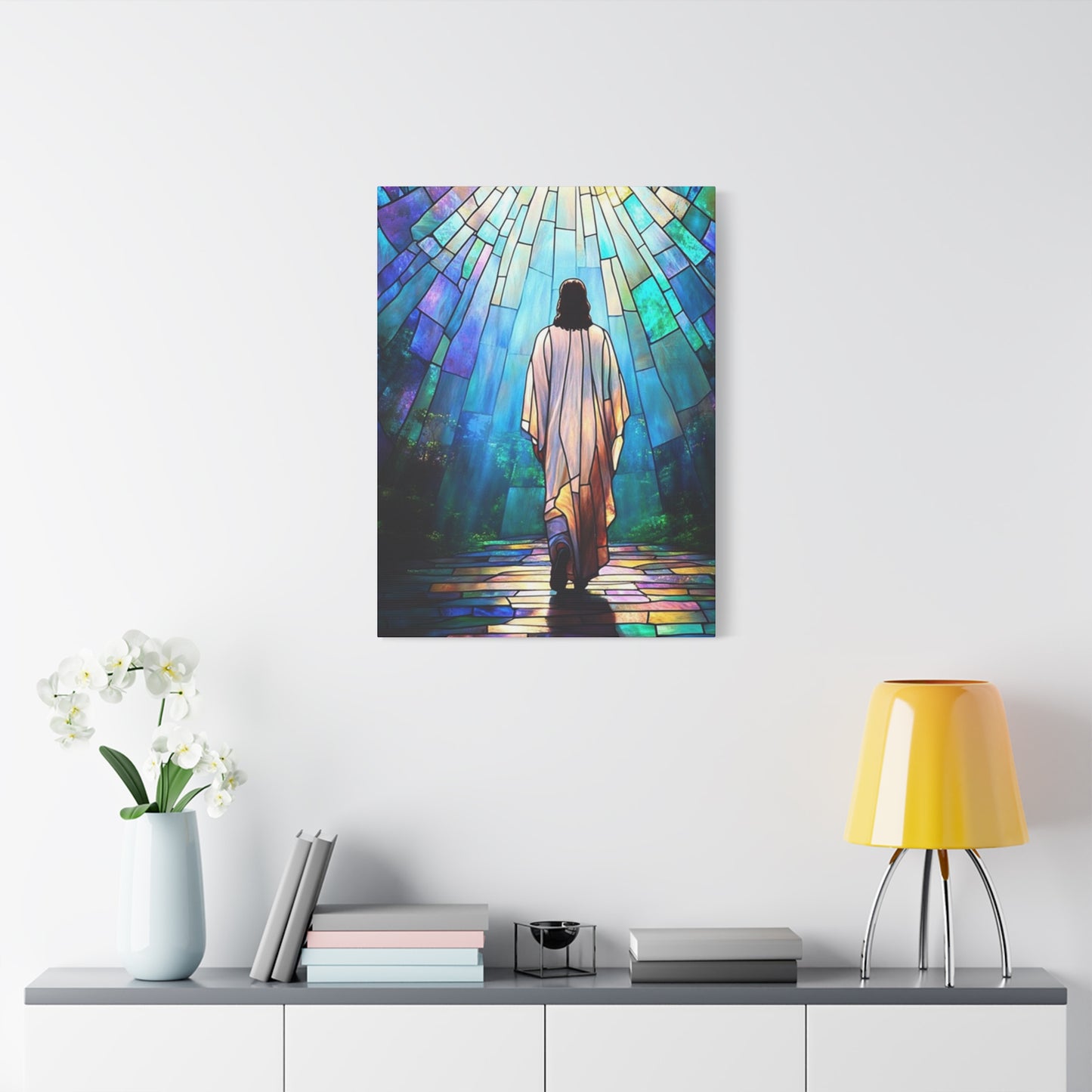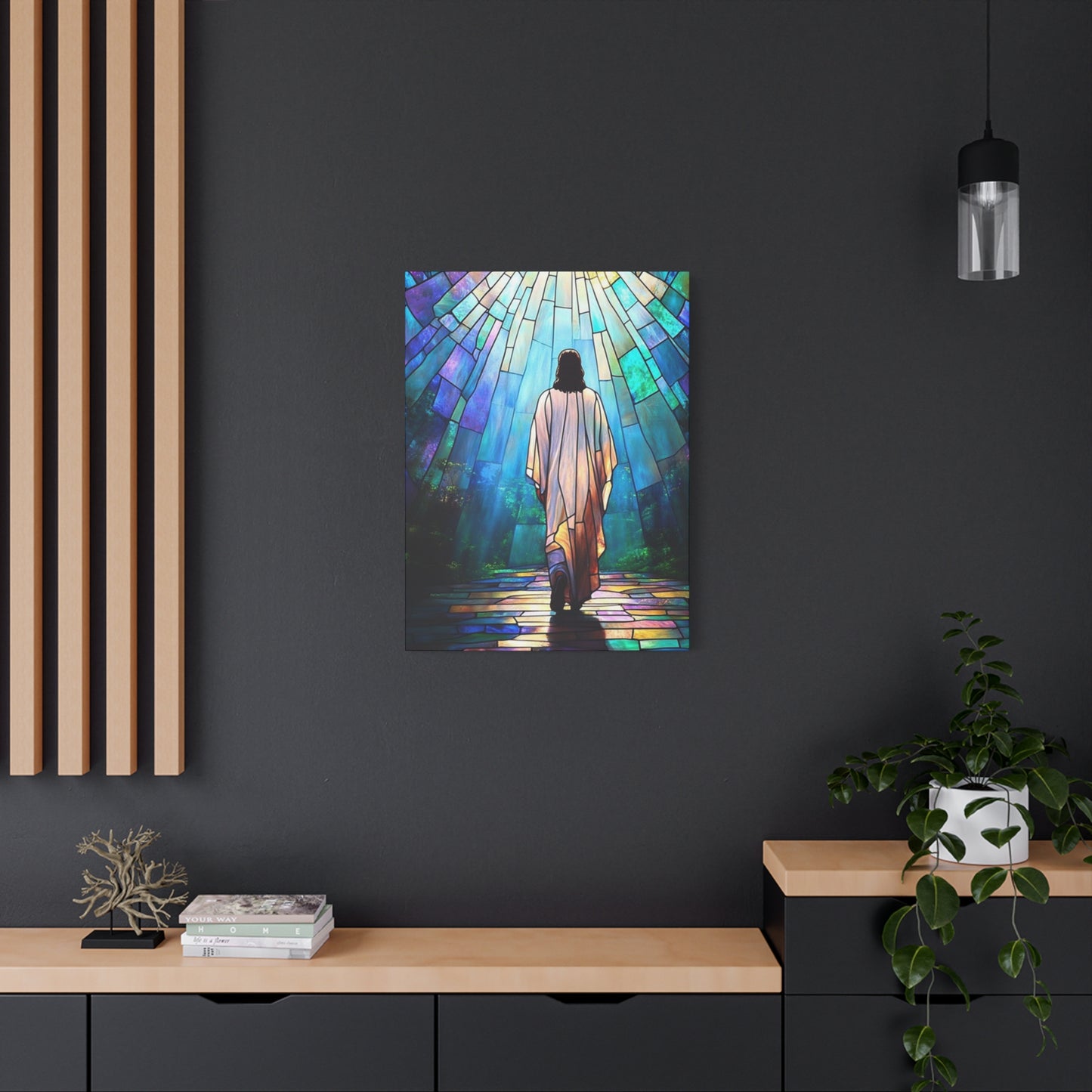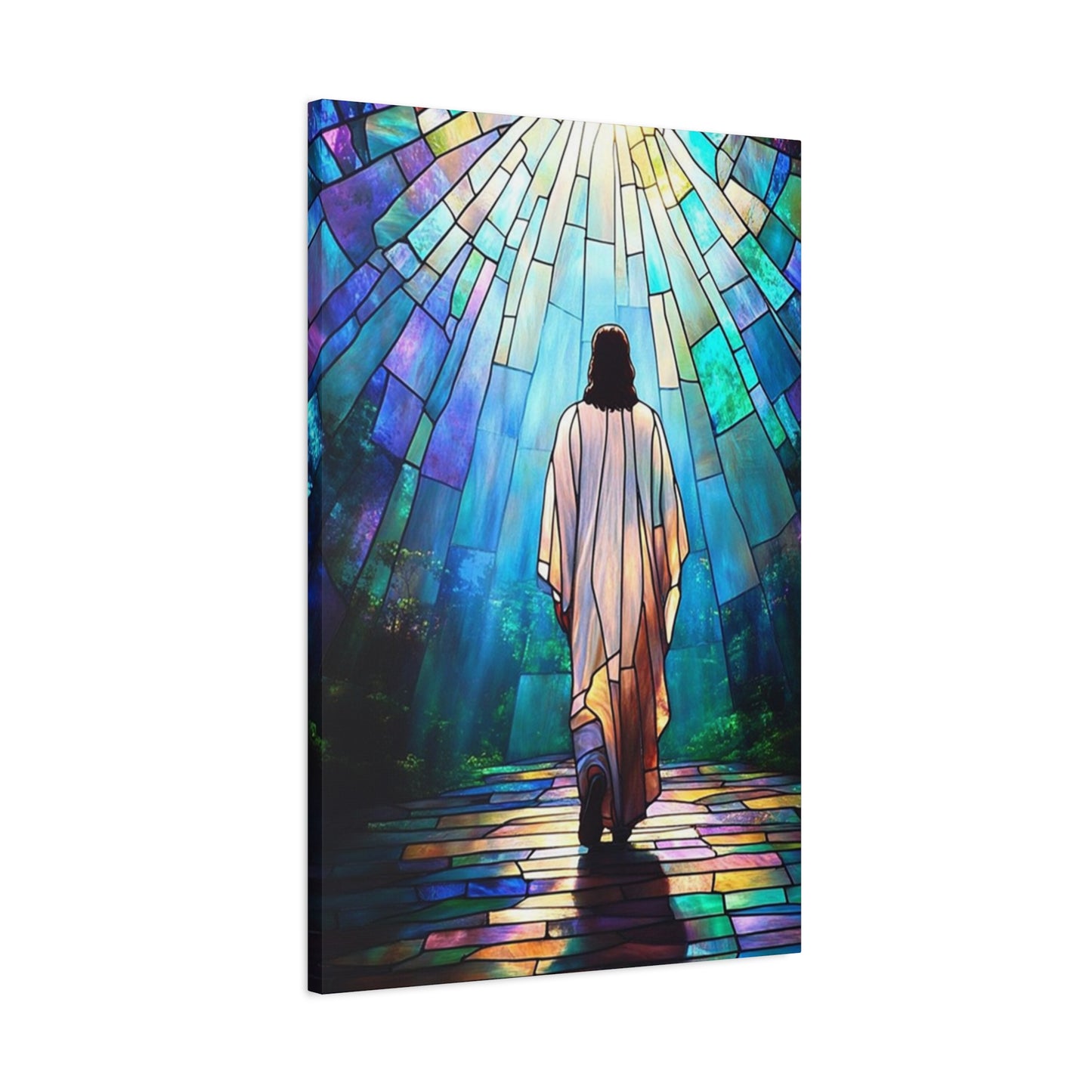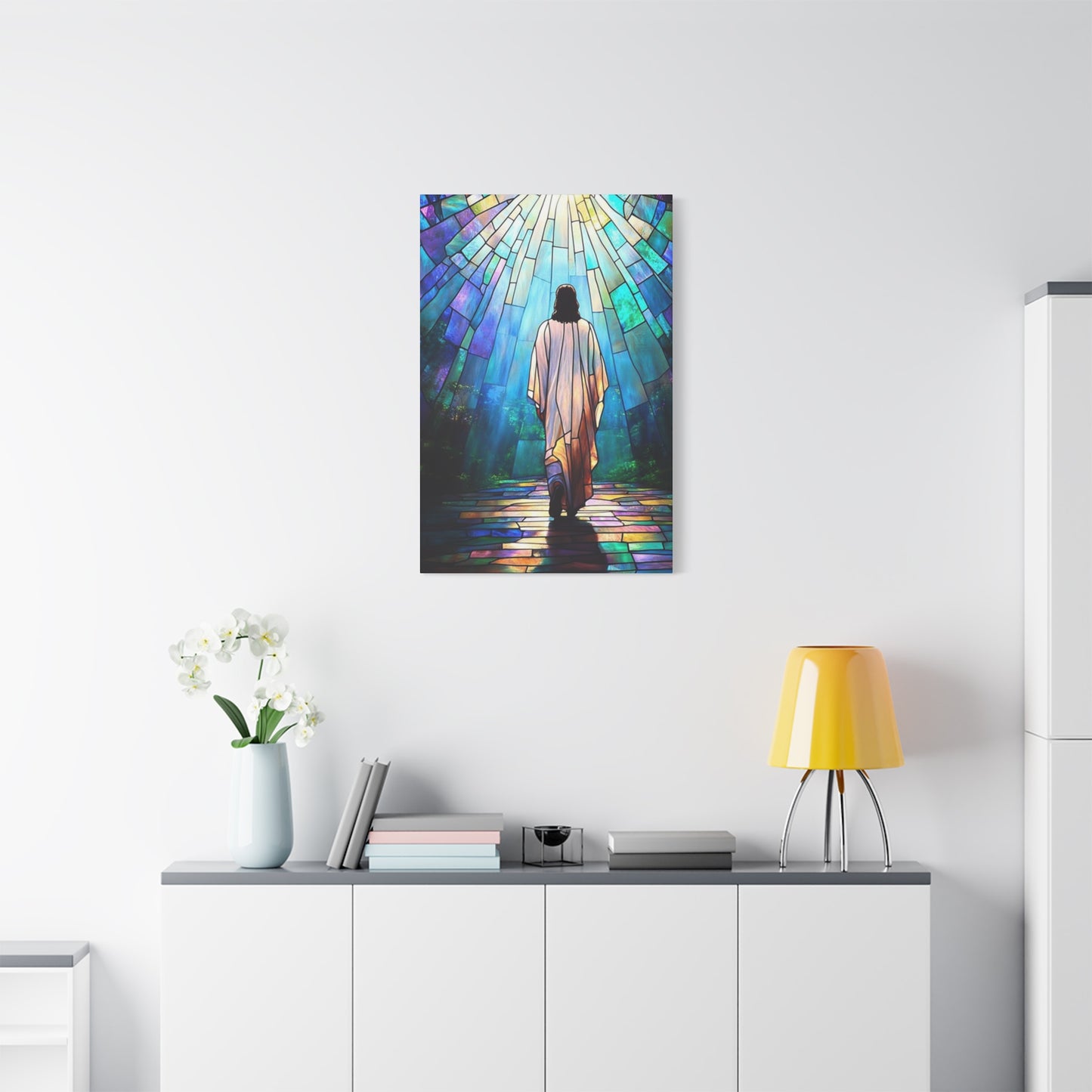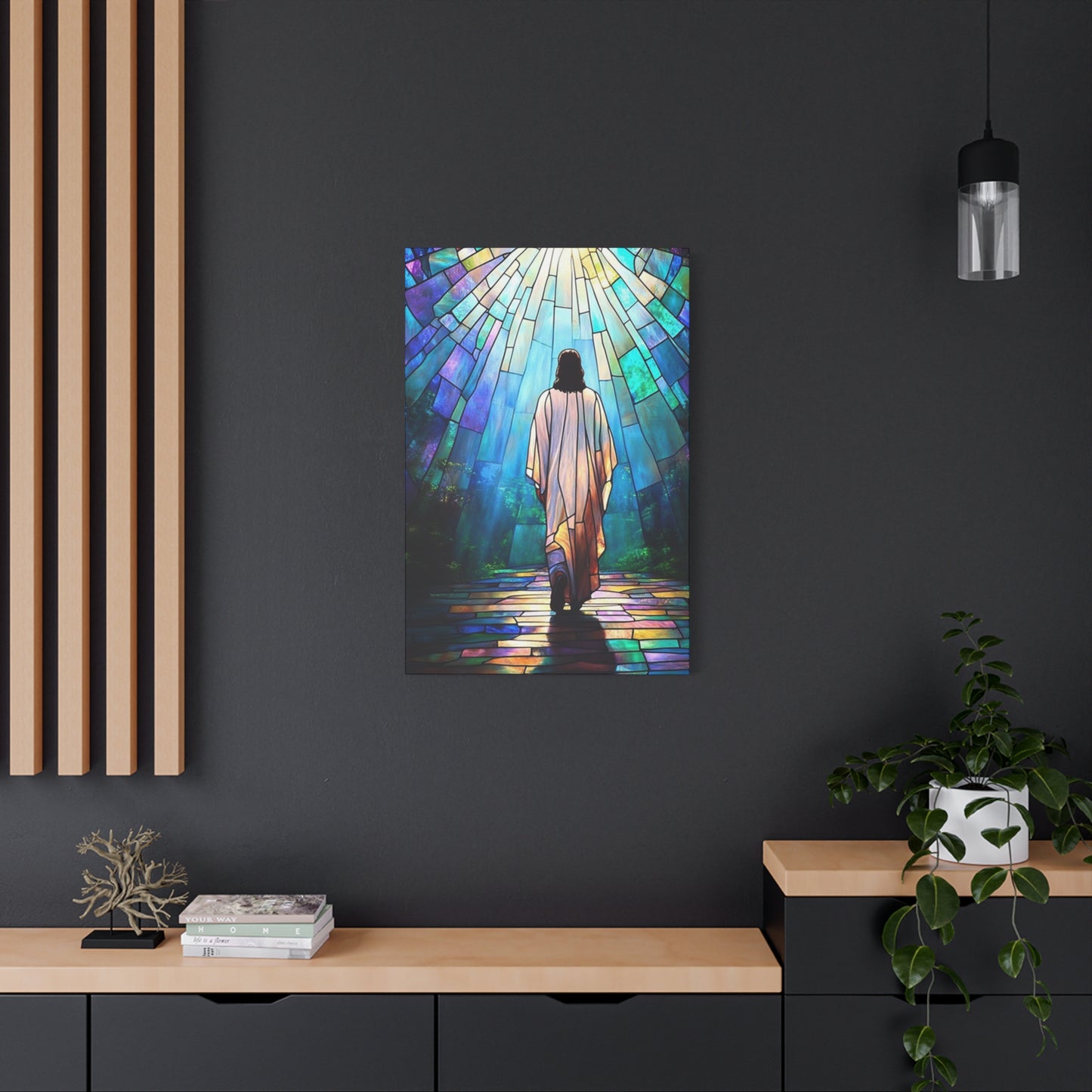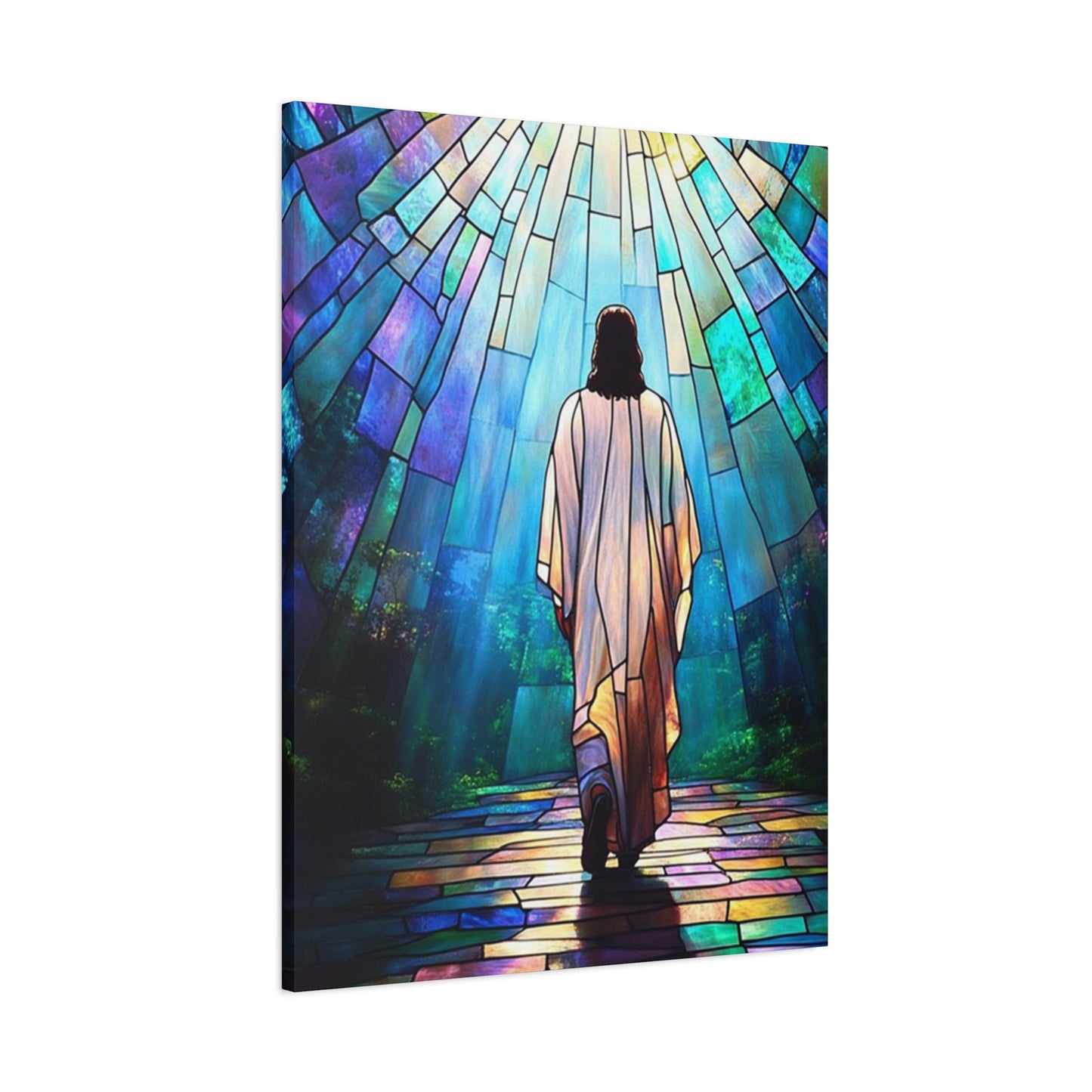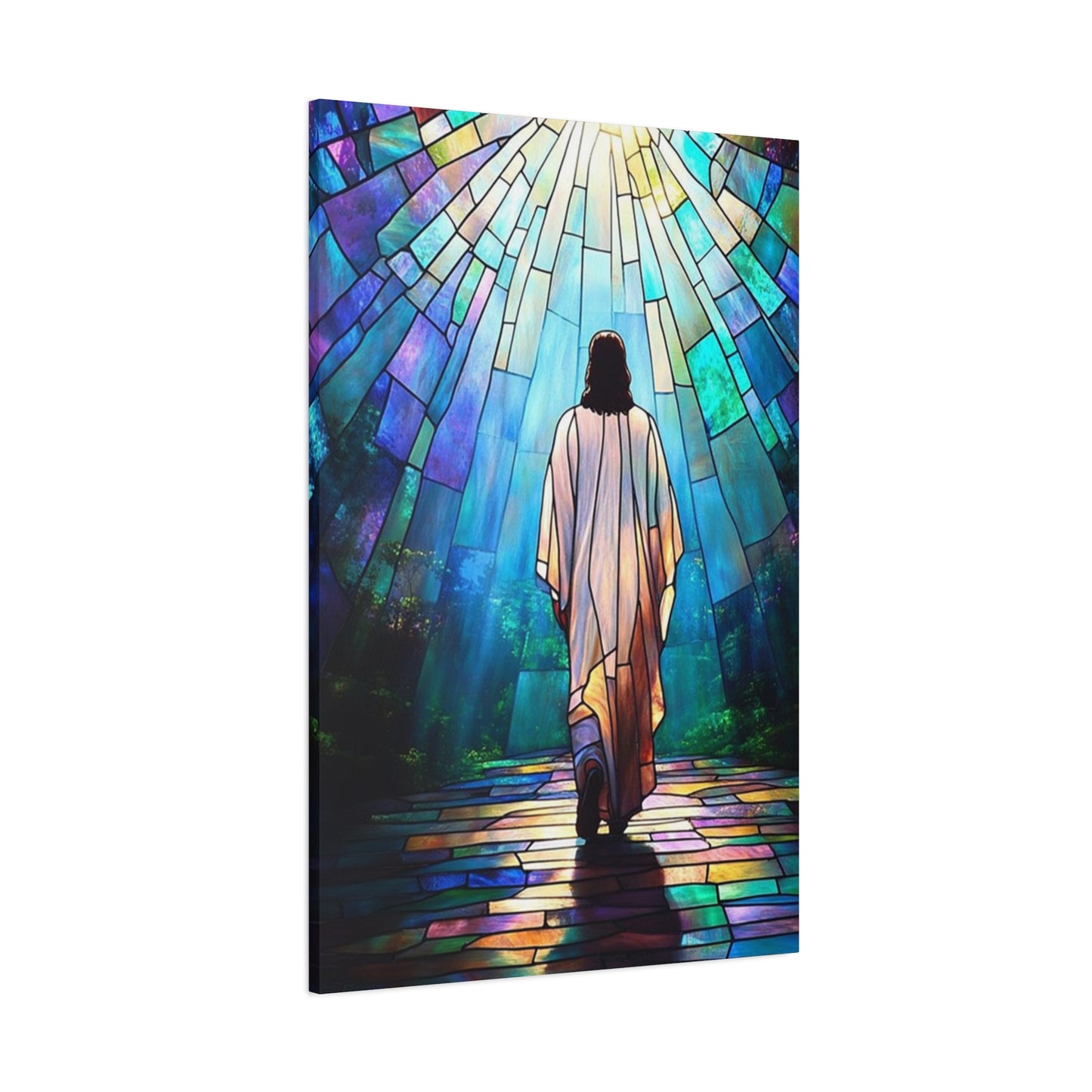Sacred Jesus Wall Art: Divine Inspiration and Spiritual Transformation for Modern Believers
Sacred artwork depicting Christ has served as a cornerstone of spiritual expression for centuries, transforming ordinary environments into sanctuaries of peace and reflection. This form of visual storytelling transcends mere decoration, becoming a powerful medium through which believers connect with their faith on a deeply personal level. The presence of Christ-centered imagery in homes, churches, and communal gathering places creates an atmosphere that encourages contemplation, prayer, and spiritual growth.
The impact of religious artwork extends far beyond aesthetic appeal, touching the hearts and souls of those who encounter it daily. When individuals surround themselves with depictions of the Savior, they create constant reminders of divine love, compassion, and guidance. This visual reinforcement strengthens faith foundations and provides comfort during challenging times, making sacred artwork an essential element in the spiritual journey of many believers.
Modern believers increasingly recognize the importance of incorporating meaningful religious imagery into their daily environments. The careful selection and placement of Christ-centered artwork serves multiple purposes, from inspiring morning prayers to providing evening moments of gratitude and reflection. These visual elements become focal points for family worship, meditation, and spiritual discussion, enriching the overall faith experience for household members and guests alike.
The psychological benefits of religious artwork have been documented through various studies, revealing how sacred imagery can reduce stress, promote feelings of peace, and encourage positive emotional responses. When individuals view representations of Christ, their minds often shift toward thoughts of hope, love, and divine protection, creating a mental state conducive to spiritual growth and emotional healing.
Contemporary artists continue to explore new methods and styles for depicting Christ, ensuring that sacred artwork remains relevant and accessible to modern audiences. These creative expressions honor traditional techniques while incorporating contemporary aesthetics, making religious imagery appealing to diverse generations and cultural backgrounds. The evolution of sacred artwork demonstrates the timeless nature of Christ's message and its continued relevance in today's world.
Historical Foundations and Artistic Evolution of Christ-Centered Imagery
The tradition of creating visual representations of Christ dates back to the early centuries of Christianity, when believers sought tangible ways to honor their faith and share their beliefs with others. Byzantine artists pioneered many techniques still used today, developing iconic styles that emphasized the divine nature of Christ through symbolic elements like halos, specific color palettes, and meaningful gestures.
Medieval artisans elevated Christ-centered artwork to unprecedented heights, creating masterpieces that adorned cathedral walls and illuminated manuscripts. These skilled craftspeople understood the power of visual storytelling, using their talents to communicate biblical narratives to populations with limited literacy. The stunning frescoes, mosaics, and paintings from this era continue to inspire modern artists and believers alike.
Renaissance masters revolutionized the portrayal of Christ through innovative techniques that emphasized human emotion and divine glory simultaneously. Artists like Leonardo da Vinci, Michelangelo, and Raphael created timeless works that captured both the humanity and divinity of Christ, establishing artistic standards that influence contemporary religious artwork. Their masterpieces demonstrate how technical skill combined with spiritual devotion can produce truly transformative visual experiences.
The Baroque period introduced dramatic lighting effects and emotional intensity to Christ-centered artwork, creating pieces that seemed to pulse with spiritual energy. Artists of this era understood how to use contrast, movement, and theatrical elements to draw viewers into profound religious experiences. These techniques continue to influence modern artists who seek to create similarly impactful devotional pieces.
Protestant Reformation brought new perspectives to religious artwork, emphasizing accessibility and personal connection over elaborate ceremonial pieces. This shift led to the development of more intimate portrayals of Christ that focused on His teachings, compassion, and relationship with ordinary believers. The resulting artistic tradition emphasized the approachable nature of Christ and His relevance to daily Christian life.
Modern artistic movements have continued to reinterpret Christ-centered imagery, incorporating contemporary styles while maintaining respect for traditional elements. Abstract expressionism, impressionism, and other modern techniques have been successfully applied to religious subjects, creating fresh perspectives on familiar biblical narratives. These innovative approaches help contemporary audiences connect with ancient truths through new visual languages.
Diverse Artistic Styles and Their Spiritual Significance
Traditional realism in Christ-centered artwork emphasizes accurate representation and attention to historical detail, creating pieces that transport viewers to biblical times. These works often incorporate careful research into first-century Palestinian culture, clothing, and landscapes, helping believers visualize the historical context of Christ's earthly ministry. The meticulous attention to detail in realistic portrayals serves to make biblical narratives feel more immediate and relevant to contemporary audiences.
Impressionistic interpretations of Christ focus on capturing the emotional essence and spiritual atmosphere surrounding biblical events rather than precise physical details. Artists working in this style use loose brushstrokes, vibrant colors, and atmospheric effects to convey the transcendent nature of Christ's presence. These works often evoke powerful emotional responses, encouraging viewers to experience the joy, peace, and wonder associated with encountering the divine.
Abstract representations of Christ challenge viewers to look beyond literal interpretations and discover deeper spiritual truths through symbolic elements and artistic techniques. These pieces might use geometric shapes, color symbolism, or non-representational forms to convey theological concepts like redemption, transformation, or eternal love. Abstract religious artwork encourages contemplative engagement, requiring viewers to actively participate in uncovering meaning and personal relevance.
Folk art traditions have produced countless examples of Christ-centered artwork that reflect cultural diversity while maintaining universal spiritual themes. These pieces often incorporate local artistic traditions, materials, and cultural symbols, demonstrating how Christ's message transcends cultural boundaries while respecting regional differences. Folk art representations make religious themes accessible to diverse populations and celebrate the global nature of Christian faith.
Contemporary digital artists have embraced modern technology to create innovative Christ-centered artwork that speaks to digitally native generations. These creators use computer graphics, digital painting techniques, and multimedia elements to produce visually stunning pieces that maintain spiritual depth. Digital religious artwork can incorporate animation, interactive elements, and virtual reality experiences, creating immersive spiritual encounters.
Minimalist approaches to Christ-centered artwork strip away unnecessary elements to focus attention on essential spiritual truths. These clean, uncluttered compositions use simple lines, limited color palettes, and negative space to create powerful visual statements about faith, hope, and divine love. Minimalist religious artwork appeals to contemporary aesthetic sensibilities while maintaining profound spiritual impact.
Popular Biblical Narratives Depicted in Sacred Artwork
The Nativity scene remains one of the most beloved subjects in Christ-centered artwork, capturing the wonder and humility surrounding Christ's birth. Artists approach this theme from countless angles, from traditional stable scenes to contemporary interpretations that emphasize the revolutionary nature of the Incarnation. These pieces often incorporate symbolic elements like the star of Bethlehem, shepherds, wise men, and angels to create comprehensive visual narratives that celebrate the miracle of Christ's entry into human history.
The Sermon on the Mount provides rich material for artists seeking to portray Christ as teacher and moral guide. These compositions typically show Christ addressing crowds on hillsides, with careful attention paid to facial expressions that convey wisdom, compassion, and authority. Artists often use landscape elements and crowd dynamics to create depth and movement, drawing viewers into the scene and encouraging them to imagine themselves among Christ's original listeners.
Christ walking on water represents one of the most dramatic and symbolically rich subjects in religious artwork. Artists use various techniques to convey the miraculous nature of this event, from realistic wave patterns to supernatural lighting effects. These pieces often emphasize themes of faith, trust, and divine power over natural forces, providing viewers with visual reminders of Christ's ability to overcome seemingly impossible obstacles.
The crucifixion scene presents artists with the challenging task of depicting ultimate sacrifice while maintaining hope and redemption themes. Skilled religious artists balance the somber reality of Christ's suffering with visual elements that point toward resurrection and victory. These powerful compositions serve as focal points for meditation on themes of atonement, forgiveness, and sacrificial love.
Resurrection artwork celebrates the triumph of life over death through dynamic compositions that emphasize light, movement, and transformation. Artists working with resurrection themes often employ dramatic lighting effects, flowing garments, and upward movement to convey the explosive power of Easter morning. These pieces provide visual anchors for Easter celebrations and year-round reminders of Christian hope.
Christ blessing children scenes appeal to families and demonstrate the gentle, welcoming nature of the Savior. These tender compositions typically focus on facial expressions, body language, and interactive elements that show Christ's love for young people. Artists often include diverse groups of children to emphasize the universal nature of Christ's love and the inclusive character of His kingdom.
The Good Shepherd Theme and Its Artistic Interpretations
The image of Christ as the Good Shepherd resonates deeply with believers seeking comfort, guidance, and protection. Artists have explored this biblical metaphor through countless interpretations, each emphasizing different aspects of pastoral care and divine leadership. Traditional depictions often show Christ carrying a lamb or leading a flock through verdant landscapes, symbolizing His protective care and loving guidance of His followers.
Pastoral scenes featuring Christ with sheep create peaceful, contemplative compositions that invite viewers to reflect on themes of trust, provision, and divine care. These artworks often incorporate natural elements like rolling hills, flowing streams, and abundant vegetation to reinforce themes of abundance and security under divine protection. The gentle interaction between Christ and His flock serves as a visual reminder of the personal nature of His care for individual believers.
Symbolic representations of the Good Shepherd theme might feature Christ holding a shepherd's staff, with artistic elements that emphasize His authority and responsibility as spiritual leader. These pieces often use warm, earth-tone color palettes that evoke feelings of comfort and stability. The inclusion of sheep in various poses and positions allows artists to explore different aspects of the believer's relationship with Christ, from wandering and rescue to rest and contentment.
Contemporary interpretations of the Good Shepherd theme might place Christ in modern settings while maintaining the essential symbolic elements of pastoral care. Urban landscapes, modern clothing, or contemporary architectural elements can provide fresh contexts for ancient truths about divine guidance and protection. These updated versions help contemporary audiences connect with traditional themes in relevant ways.
Abstract Good Shepherd artwork might use flowing lines, organic shapes, and symbolic colors to convey the essence of pastoral care without literal representation. These pieces encourage viewers to contemplate the emotional and spiritual aspects of divine guidance rather than focusing on specific visual details. Abstract interpretations can be particularly effective in modern settings where traditional imagery might seem outdated or disconnected from contemporary life.
The Good Shepherd theme lends itself beautifully to series or sequential artwork that tells the story of lost sheep being found and restored to the flock. These narrative sequences can be displayed together to create comprehensive visual stories that reinforce themes of redemption, forgiveness, and second chances. Such series work particularly well in educational settings or family environments where children can follow the story progression.
Christ's Teachings Through Visual Storytelling
Parable illustrations provide artists with rich narrative material that combines visual appeal with profound spiritual instruction. The parable of the prodigal son, for example, offers multiple scenes for artistic interpretation, from the son's departure through his return and reconciliation with his father. Artists can focus on facial expressions, body language, and environmental details to convey the emotional journey of repentance, forgiveness, and restoration.
The Good Samaritan story has inspired countless artistic interpretations that emphasize themes of compassion, neighborly love, and crossing cultural boundaries to help others. These compositions typically show the dramatic moment of rescue or the tender care provided to the injured traveler. Artists often use contrast between the caring Samaritan and the indifferent religious leaders to reinforce the parable's moral lessons about true righteousness and practical love.
Miracle scenes provide opportunities for artists to explore themes of faith, divine power, and compassionate intervention in human suffering. The feeding of the five thousand, healing of the blind, or calming of the storm offer dramatic moments that can be captured through various artistic styles. These pieces often emphasize the transformation that occurs through divine intervention, showing before and after states or capturing the moment of miraculous change.
Beatitudes artwork interprets Christ's teachings about blessed living through visual metaphors and symbolic representations. Each beatitude can inspire individual pieces or comprehensive series that explore different aspects of spiritual maturity and kingdom values. Artists might use landscape elements, facial expressions, or symbolic objects to convey the internal qualities Christ described as blessed.
Teaching moments between Christ and His disciples provide intimate scenes that emphasize the mentoring aspect of Christ's ministry. These quieter compositions focus on relationship dynamics, learning processes, and the transmission of spiritual wisdom. Artists working with these themes often create pieces that invite viewers to imagine themselves as students in Christ's informal classroom.
Prayer scenes showing Christ in communion with His heavenly Father demonstrate the importance of spiritual discipline and divine relationship. These contemplative pieces often feature Christ alone in natural settings, emphasizing the solitary nature of deep prayer while maintaining accessibility for viewers seeking their own prayer inspiration. The peaceful, focused quality of these compositions encourages personal reflection and spiritual growth.
Symbolic Elements and Their Spiritual Meanings
Light symbolism plays a crucial role in Christ-centered artwork, representing divine presence, spiritual illumination, and the dispelling of darkness through truth and righteousness. Artists use various lighting techniques to create halos, radiant backgrounds, or dramatic spotlighting effects that emphasize Christ's divine nature. The interplay between light and shadow in religious artwork often represents the cosmic battle between good and evil, with Christ as the ultimate source of spiritual illumination.
Color symbolism in religious artwork carries deep theological significance, with specific hues traditionally associated with different aspects of Christ's nature and ministry. Purple represents royalty and divine majesty, red symbolizes sacrifice and redemptive love, white conveys purity and righteousness, while blue often represents heavenly origin and spiritual truth. Artists who understand these traditional associations can layer multiple levels of meaning into their work through careful color choices.
Hand gestures and body language in Christ-centered artwork communicate spiritual truths through non-verbal visual elements. Open hands suggest welcome and blessing, raised hands indicate teaching or blessing authority, while hands extended toward viewers invite participation and relationship. Artists study traditional gesture meanings while also considering contemporary body language interpretations to ensure their work communicates effectively across cultural and temporal boundaries.
Natural elements like water, mountains, trees, and animals carry symbolic significance in religious artwork, often representing spiritual concepts like purification, stability, growth, and the harmony of creation under divine care. Christ depicted near water might emphasize themes of cleansing and renewal, while mountain settings suggest divine encounter and spiritual elevation. Understanding these symbolic associations helps artists create layered compositions that reward careful contemplation.
Architectural elements in Christ-centered artwork can represent spiritual concepts like divine protection, community gathering, or the permanence of faith foundations. Temples, houses, doorways, and bridges all carry symbolic potential when incorporated thoughtfully into religious compositions. These elements can provide context for Christ's earthly ministry while pointing toward eternal spiritual truths.
Clothing and fabric elements in religious artwork often carry symbolic meaning related to status, purity, or spiritual transformation. Flowing robes might suggest movement and dynamism, while simple garments emphasize humility and accessibility. The condition, color, and style of clothing depicted can communicate information about characters' spiritual states, social positions, and roles within biblical narratives.
Traditional Mediums and Contemporary Techniques
Oil painting remains the gold standard for traditional religious artwork, offering unparalleled color depth, blending capabilities, and archival stability. Master oil painters can achieve remarkable subtlety in skin tones, fabric textures, and atmospheric effects that bring biblical scenes to life. The slow-drying nature of oil paint allows for extensive blending and detail work, making it ideal for the careful modeling and luminous effects prized in religious artwork.
Watercolor techniques bring a unique quality to Christ-centered artwork, offering transparency, spontaneity, and ethereal effects that can suggest the transcendent nature of divine encounters. The unpredictable flow of watercolor pigments can create beautiful atmospheric effects that suggest divine presence or spiritual transformation. This medium works particularly well for depicting heavenly scenes, resurrection imagery, or moments of spiritual revelation.
Acrylic painting provides versatility and accessibility for contemporary religious artists, offering quick-drying properties and compatibility with various techniques from transparent glazing to heavy impasto textures. Modern acrylic formulations rival traditional oils in color saturation and archival quality while allowing for experimental techniques and mixed-media applications. This medium appeals to artists working in contemporary styles while maintaining professional quality standards.
Pastel artwork creates soft, luminous effects particularly suited to devotional subjects requiring gentle, contemplative moods. The direct application of pure pigment through pastel sticks allows for rich color saturation and subtle blending effects. Pastel portraits of Christ often achieve remarkable warmth and intimacy, making this medium popular for personal devotional pieces and intimate religious artwork.
Digital art and graphic design have revolutionized religious artwork creation, offering unlimited color palettes, easy revision capabilities, and integration with modern printing and display technologies. Digital artists can experiment freely with composition, lighting, and effects while maintaining the ability to produce multiple copies or variations of successful pieces. This technology makes religious artwork more accessible to broader audiences through online distribution and print-on-demand services.
Mixed-media approaches combine traditional and contemporary materials to create unique textural and visual effects in religious artwork. Artists might incorporate fabric, metal leaf, three-dimensional elements, or found objects into painted compositions to enhance symbolic meaning or create interactive viewing experiences. These experimental approaches can help contemporary audiences engage with traditional religious themes through fresh artistic experiences.
Cultural Perspectives and Global Artistic Traditions
African artistic traditions bring unique perspectives to Christ-centered artwork through distinctive color palettes, pattern elements, and cultural symbols that celebrate the universal nature of Christian faith. African artists often incorporate traditional textile patterns, earth-tone color schemes, and cultural dress elements that help viewers from African backgrounds connect more personally with biblical narratives. These cultural adaptations demonstrate how Christ's message transcends geographical and ethnic boundaries.
Asian interpretations of Christ-centered artwork often emphasize contemplative qualities, minimalist aesthetics, and symbolic elements drawn from Eastern artistic traditions. The influence of calligraphy, landscape painting, and meditation practices creates religious artwork that appeals to audiences familiar with Eastern spiritual traditions. These cross-cultural artistic expressions help demonstrate the global reach and universal appeal of Christian themes.
Latin American religious artwork typically features vibrant colors, emotional intensity, and folk art elements that reflect the passionate devotional traditions of these cultures. The incorporation of local flowers, architectural elements, and cultural clothing helps create Christ-centered artwork that resonates deeply with Hispanic and Latino audiences. These culturally sensitive interpretations honor both Christian themes and regional artistic heritage.
European classical traditions continue to influence contemporary Christ-centered artwork through established iconographic conventions, technical standards, and compositional approaches developed over centuries of religious art creation. Modern artists often reference or reinterpret classical masterpieces while incorporating contemporary elements and personal artistic vision. This dialogue between tradition and innovation keeps classical influences relevant for modern audiences.
Native American artists bring unique spiritual perspectives to Christ-centered artwork through incorporation of indigenous symbols, natural elements, and traditional artistic techniques. These cross-cultural expressions create powerful connections between Christian themes and Native spiritual traditions, often emphasizing environmental stewardship, community values, and harmony with creation. Such artwork serves important roles in indigenous Christian communities.
Contemporary multicultural approaches celebrate diversity within Christian communities by incorporating elements from multiple cultural traditions into single artworks or comprehensive series. These inclusive artistic expressions help demonstrate the global, multicultural nature of modern Christianity while honoring the specific cultural contributions of different ethnic and regional communities within the broader faith tradition.
The Psychology of Sacred Imagery and Spiritual Response
Color psychology plays a significant role in how viewers respond emotionally and spiritually to Christ-centered artwork, with different hues triggering specific psychological and physiological responses. Warm colors like red, orange, and yellow tend to create feelings of energy, comfort, and intimacy, while cool colors like blue, green, and purple promote calm, reflection, and spiritual contemplation. Understanding these color relationships helps artists create pieces that support specific devotional goals and emotional responses.
Compositional elements like balance, movement, and focal points guide viewer attention and create psychological responses that support spiritual engagement with religious artwork. Symmetrical compositions often feel stable and peaceful, while asymmetrical arrangements create dynamic energy and movement. The strategic placement of Christ figures within compositions can create feelings of intimacy, authority, or accessibility depending on artistic goals.
Facial expressions in Christ-centered artwork profoundly impact viewer emotional response and spiritual connection with depicted subjects. Gentle, compassionate expressions invite trust and intimacy, while more serious or intense expressions might emphasize authority and divine power. Artists must carefully consider the emotional tone they wish to create and craft facial features accordingly to support their spiritual messaging goals.
Scale and proportion considerations affect how viewers relate to Christ-centered artwork, with larger pieces creating more immersive experiences while smaller intimate pieces encourage personal, contemplative engagement. The relative size of Christ figures compared to other elements in compositions can communicate theological concepts about divine-human relationships, Christ's accessibility, or His cosmic significance.
Lighting effects in religious artwork trigger psychological responses related to revelation, hope, and divine presence, with strategic illumination creating powerful emotional and spiritual impact. Dramatic lighting can suggest divine intervention or supernatural presence, while soft, even lighting promotes peaceful contemplation and intimate devotional experiences. Artists who master lighting techniques can guide viewer emotional responses and enhance spiritual messaging.
Texture and surface qualities in Christ-centered artwork create tactile psychological responses that enhance viewer engagement and emotional connection with depicted subjects. Smooth, flowing surfaces might suggest peace and harmony, while rougher textures could emphasize struggle, sacrifice, or earthly reality. The interplay between different textural elements can create rich, layered viewing experiences that reward extended contemplation.
Placement Strategies for Maximum Spiritual Impact
Entry areas provide opportunities to establish spiritual tone and welcome visitors with Christ-centered artwork that sets expectations for the entire environment. Pieces placed near doorways should be appropriately sized to create impact without overwhelming the architectural features. These locations work well for artwork depicting Christ's welcoming nature, His invitation to "come unto me," or scenes that emphasize His role as the way, truth, and life.
Living areas benefit from Christ-centered artwork that encourages family devotion, discussion, and spiritual reflection during daily activities. These locations require pieces that can be appreciated from multiple viewing angles and distances, as family members will encounter them during various activities throughout the day. Artwork depicting Christ's teachings, family blessings, or community gathering themes work particularly well in these shared living environments.
Prayer and meditation corners deserve special consideration for Christ-centered artwork that supports focused spiritual activities and personal devotional time. These intimate locations often work best with smaller, more contemplative pieces that invite close viewing and extended meditation. Portraits of Christ in prayer, scenes of His wilderness temptation, or abstract representations of spiritual themes can enhance personal worship experiences.
Dining areas offer opportunities for Christ-centered artwork that celebrates provision, gratitude, and community fellowship around shared meals. These locations work well for pieces depicting the Last Supper, Christ's feeding miracles, or scenes of Him sharing meals with disciples and followers. The social nature of dining areas makes them ideal for artwork that emphasizes Christ's relational aspects and community-building ministry.
Bedroom environments require Christ-centered artwork that promotes peace, rest, and spiritual comfort during vulnerable sleeping hours. These private locations work well for gentle, reassuring images of Christ as protector, comforter, or good shepherd. Avoid overly dramatic or intense pieces that might disturb rest, instead choosing artwork that creates feelings of safety, peace, and divine presence.
Hallways and transitional areas provide opportunities for Christ-centered artwork that accompanies daily movement and creates spiritual touchpoints throughout the living environment. These locations work well for series or sequential pieces that tell stories of Christ's ministry or spiritual journey themes. The linear nature of hallways makes them ideal for narrative artwork that unfolds as viewers move through the area.
Creating Sacred Environments Through Artistic Choices
Lighting design significantly impacts how Christ-centered artwork functions within sacred environments, with proper illumination enhancing spiritual impact while poor lighting diminishes artistic and devotional effectiveness. Natural light sources create dynamic viewing experiences that change throughout the day, while artificial lighting systems offer consistent illumination with controllable intensity and direction. Combining both lighting types creates flexible sacred environments that support various devotional activities.
Color coordination between Christ-centered artwork and surrounding environmental elements helps create cohesive sacred environments that support spiritual focus and contemplation. Complementary color schemes can make artwork stand out as focal points, while analogous color relationships create harmonious environments that promote peace and reflection. Understanding color theory helps in creating environments where artwork enhances rather than competes with architectural and decorative elements.
Furniture placement and room arrangement should support contemplative viewing of Christ-centered artwork while maintaining functional living requirements. Seating areas positioned to face significant religious pieces encourage meditation and discussion, while clear sightlines from multiple locations ensure artwork remains visible during various activities. The relationship between artwork and furniture creates viewing experiences that either support or hinder spiritual engagement.
Architectural features like alcoves, built-in shelving, or specialty lighting systems can be designed or modified to showcase Christ-centered artwork effectively while creating dedicated sacred environments within larger living areas. These structural elements help separate devotional viewing from daily activities while maintaining integration with overall room design. Custom architectural solutions demonstrate commitment to creating meaningful sacred environments.
Sound considerations affect how viewers experience Christ-centered artwork, with background noise levels, acoustic properties, and audio equipment placement all impacting the contemplative atmosphere surrounding religious pieces. Quiet environments promote meditative viewing experiences, while the ability to add appropriate background music or recorded prayers can enhance devotional activities. Sound-absorbing materials and strategic room arrangement help create peaceful viewing environments.
Scent and aromatherapy elements can enhance the sacred environment surrounding Christ-centered artwork through the psychological associations between specific fragrances and spiritual experiences. Traditional incense, essential oils, or natural floral arrangements create multi-sensory devotional environments that engage more than just visual perception. These additional sensory elements should complement rather than overwhelm the primary focus on religious artwork.
Commissioning Custom Religious Artwork
Initial consultation processes for custom Christ-centered artwork should explore theological preferences, artistic style preferences, size requirements, and intended installation environments to ensure successful collaborative outcomes. Clear communication between clients and artists prevents misunderstandings and ensures that finished pieces meet both artistic and spiritual expectations. Written agreements should specify timelines, payment schedules, revision policies, and delivery arrangements.
Biblical accuracy and theological sensitivity require careful attention during the custom artwork creation process, with artists and clients working together to ensure that depicted scenes, symbols, and messages align with orthodox Christian teaching and specific denominational preferences. Research into historical contexts, cultural backgrounds, and scriptural details helps create artwork that honors both artistic excellence and theological integrity.
Style selection for custom Christ-centered artwork involves balancing personal preferences, environmental requirements, and budget considerations while ensuring that chosen approaches effectively communicate intended spiritual messages. Artists can provide portfolios demonstrating various stylistic approaches while helping clients understand how different techniques might serve their specific devotional goals and aesthetic preferences.
Size and format considerations for custom religious artwork must account for installation locations, viewing distances, architectural constraints, and budget limitations while ensuring that finished pieces create appropriate visual impact and spiritual presence. Artists can provide guidance about optimal sizing for different environments and viewing purposes, helping clients make informed decisions about artwork dimensions and formats.
Timeline management for custom Christ-centered artwork requires realistic planning that accounts for design development, client approval processes, creation time, drying or finishing periods, and installation scheduling. Rush orders typically compromise artistic quality or increase costs significantly, so advance planning benefits both artists and clients seeking high-quality custom religious artwork.
Budget planning for custom religious artwork should include costs for design development, materials, artist labor, framing or mounting, delivery, and installation services to avoid unexpected expenses during the commissioning process. Artists can provide detailed estimates that help clients understand the relationship between artistic complexity, size requirements, and final costs while identifying potential areas for budget optimization.
Preservation and Care of Religious Artwork
Environmental factors significantly impact the longevity of Christ-centered artwork, with temperature fluctuations, humidity levels, air quality, and light exposure all affecting preservation over time. Stable environmental conditions prevent expansion and contraction cycles that can damage paint layers, canvas supports, and frame structures. Professional conservation guidelines recommend specific temperature and humidity ranges for optimal artwork preservation.
Light damage represents one of the most serious threats to religious artwork preservation, with both natural sunlight and artificial illumination causing gradual fading, color shifts, and material degradation over extended exposure periods. UV-filtering glass, controlled lighting systems, and strategic placement away from direct sunlight help minimize light damage while maintaining artwork visibility for devotional purposes.
Cleaning and maintenance procedures for Christ-centered artwork require careful attention to material types, age factors, and artistic techniques to avoid causing damage during routine care activities. Professional conservators recommend specific cleaning methods for different artistic mediums, while warning against common household cleaning products and techniques that might seem harmless but actually cause permanent damage.
Frame and mounting considerations affect both artwork preservation and spiritual presentation, with proper framing systems providing physical protection while enhancing visual impact and environmental integration. Archival matting materials, appropriate glazing options, and structurally sound frame construction help ensure that religious artwork remains stable and visually impressive over extended periods.
Insurance and documentation provide financial protection and historical records for valuable Christ-centered artwork, with professional appraisals, detailed photography, and proper documentation helping establish value and authenticity for insurance and estate planning purposes. Regular updated appraisals account for market changes and artwork appreciation over time.
Professional conservation services become necessary when religious artwork shows signs of damage, deterioration, or instability that exceeds the scope of routine maintenance activities. Qualified art conservators can assess artwork condition, develop treatment plans, and perform restoration work that preserves both artistic integrity and spiritual significance while extending artwork lifespan for future generations.
Educational Applications and Teaching Through Art
Sunday school environments benefit enormously from Christ-centered artwork that supports biblical instruction, visual learning, and spiritual development for students of all ages. Age-appropriate religious artwork helps children and adults connect emotionally with biblical narratives while providing visual references for theological concepts that might otherwise remain abstract. Strategic artwork selection can reinforce lesson plans and create lasting memories associated with spiritual learning.
Bible study groups can enhance their discussion experiences through Christ-centered artwork that illustrates specific passages, theological themes, or historical contexts being explored. Visual references help participants understand cultural backgrounds, geographical settings, and symbolic elements within biblical texts while providing common focal points for group reflection and discussion. Portable artwork options allow study groups to create temporary sacred environments in various meeting locations.
Homeschool curricula increasingly incorporate Christ-centered artwork as educational tools that combine artistic appreciation with spiritual instruction and historical learning. Religious artwork provides opportunities to discuss artistic techniques, cultural contexts, historical periods, and theological concepts within integrated educational experiences. Students can develop critical thinking skills while deepening their understanding of Christian heritage and biblical narratives.
Vacation Bible School programs use Christ-centered artwork to create immersive learning environments that transport children into biblical times and stories. Large-scale backdrop pieces, interactive artwork elements, and hands-on art activities help children engage multiple learning styles while absorbing spiritual truths through memorable visual experiences. These temporary installations demonstrate how religious artwork can transform ordinary educational environments into extraordinary spiritual adventures.
Youth ministry programming can incorporate contemporary Christ-centered artwork that speaks to teenage aesthetic sensibilities while maintaining theological depth and spiritual relevance. Modern artistic styles, current cultural references, and interactive artwork elements help youth leaders connect with adolescent audiences who might otherwise find traditional religious imagery outdated or unappealing.
Adult education programs benefit from Christ-centered artwork that illustrates theological concepts, church history, and spiritual development themes for mature learners seeking deeper understanding of their faith. Sophisticated artistic treatments of complex spiritual topics help adult students visualize abstract concepts while appreciating the intellectual and emotional depth of Christian spiritual tradition.
Therapeutic Applications of Sacred Art
Hospital and healthcare environments often incorporate Christ-centered artwork to provide comfort, hope, and spiritual support for patients, families, and medical staff facing challenging health situations. Research indicates that viewing peaceful religious imagery can reduce stress, lower blood pressure, and promote healing responses through psychological mechanisms associated with hope, faith, and divine comfort. Healthcare chaplains frequently use religious artwork as starting points for pastoral conversations and spiritual care activities.
Grief counseling and bereavement support services utilize Christ-centered artwork depicting resurrection themes, eternal life concepts, and divine comfort to help individuals process loss and find hope during mourning periods. Visual representations of Christ's victory over death provide tangible reminders of Christian beliefs about afterlife, reunion, and ultimate redemption. Memorial artwork often becomes important focal points for ongoing grief work and spiritual healing.
Mental health applications of Christ-centered artwork include therapeutic programs that use religious imagery to support treatment for depression, anxiety, addiction recovery, and trauma healing. Art therapy approaches might involve creating personal interpretations of biblical scenes, meditating on religious artwork, or discussing emotional responses to sacred imagery. These therapeutic applications demonstrate how visual art can support psychological healing within faith-based treatment frameworks.
Senior care facilities increasingly recognize the benefits of Christ-centered artwork for elderly residents dealing with memory loss, physical decline, and end-of-life concerns. Familiar religious imagery can trigger positive memories, provide comfort during confused states, and create connections between residents and their faith heritage. Activity programming often includes artwork viewing sessions that combine spiritual reflection with cognitive stimulation and social interaction.
Addiction recovery programs incorporate Christ-centered artwork that emphasizes themes of redemption, transformation, new life, and divine forgiveness to support individuals working through recovery processes. Visual reminders of spiritual transformation help recovering addicts maintain focus on positive change while connecting with spiritual resources that support sobriety goals. Recovery facilities often feature artwork that celebrates second chances and divine grace.
Veterans and military personnel dealing with trauma, deployment stress, and combat-related psychological challenges often find comfort in Christ-centered artwork that depicts divine protection, peace, and hope. Chapel environments in military facilities use religious artwork to create safe havens where service members can process difficult experiences within faith-based support systems. Portable artwork options allow military chaplains to create sacred environments in various deployment locations.
Community and Church Applications
Worship facility design increasingly incorporates Christ-centered artwork as integral architectural elements rather than mere decorative additions, with religious imagery serving specific liturgical functions and enhancing congregational worship experiences. Strategic artwork placement supports worship flow, provides focal points for various liturgical seasons, and creates visual anchors for different worship activities throughout church services.
Fellowship hall environments benefit from Christ-centered artwork that emphasizes community themes, shared meals, and Christian hospitality while creating welcoming atmospheres for congregational gatherings. These social environments require artwork that can be appreciated during active conversation and group activities while maintaining spiritual significance and reinforcing church identity and values.
Children's ministry areas use age-appropriate Christ-centered artwork to create engaging, educational environments that capture young imaginations while teaching fundamental Christian concepts and biblical stories. Bright colors, interactive elements, and simplified compositions help children connect with religious themes while developing positive associations with church environments and Christian community participation.
Counseling and prayer room environments require Christ-centered artwork that promotes peace, reflection, and confidential conversation while providing visual comfort and spiritual support for individuals dealing with personal challenges. These intimate environments work best with gentle, reassuring artwork that emphasizes Christ's compassion, understanding, and availability for personal relationship and guidance.
Administrative and office areas can incorporate Christ-centered artwork that reflects church identity and values while creating professional environments suitable for business activities and visitor reception. These locations require artwork that communicates organizational mission and spiritual focus while maintaining appropriate dignity for various administrative functions and community interactions.
Outdoor and landscape applications of Christ-centered artwork, including sculpture gardens, prayer walks, and architectural elements, help extend sacred environments beyond building walls while connecting faith themes with natural creation. Weather-resistant materials and appropriate scaling ensure that outdoor religious artwork maintains visual impact and structural integrity while providing year-round spiritual inspiration for church members and community visitors.
Gift-Giving and Memorial Applications
Wedding and anniversary gifts featuring Christ-centered artwork celebrate Christian marriage ideals while providing lasting reminders of divine blessing and spiritual commitment within marital relationships. Custom artwork depicting biblical marriage passages, blessing ceremonies, or symbolic representations of covenant love creates meaningful presents that honor both romantic relationships and shared faith commitments.
Baptism and dedication ceremonies often feature gift presentations of Christ-centered artwork that commemorate spiritual milestones while providing permanent reminders of divine grace and community support. Age-appropriate religious artwork helps mark important spiritual transitions while creating visual connections between individuals and their faith heritage that can be appreciated throughout life.
Confirmation and first communion celebrations frequently include Christ-centered artwork gifts that acknowledge spiritual maturity and commitment while providing visual support for continued faith development. These milestone gifts often become treasured possessions that accompany young people into adulthood as reminders of their spiritual foundation and community connections.
Graduation gifts featuring Christ-centered artwork acknowledge educational achievements while providing spiritual guidance and encouragement for future endeavors. Religious artwork emphasizing divine guidance, wisdom, and purpose helps graduates maintain spiritual perspective as they transition into new life phases and professional responsibilities.
Conclusion
Sacred Jesus wall art offers modern believers a profound way to bring divine inspiration and spiritual transformation into their living spaces. These artworks capture the essence of faith, hope, and love through powerful depictions of Jesus Christ, serving as daily reminders of spiritual strength and grace. Whether presented in traditional iconography or contemporary interpretations, Jesus-themed wall art connects deeply with the hearts of believers, enriching homes with meaning and sacred presence.
One of the most significant qualities of sacred Jesus wall art is its ability to foster reflection and devotion. By portraying moments of compassion, sacrifice, and resurrection, these pieces invite viewers into a personal encounter with spirituality. They encourage believers to meditate on their faith and find solace amid life’s challenges, offering a source of comfort and encouragement. This emotional resonance transforms walls into sacred spaces that nurture the soul and elevate the atmosphere of any room.
Beyond its spiritual significance, Jesus wall art also enhances the aesthetic and emotional environment of modern homes. The blend of artistry and faith creates an uplifting ambiance, where beauty meets purpose. Whether displayed in living rooms, prayer corners, or communal spaces, these artworks cultivate a sense of peace, reverence, and unity. They serve as both artistic expressions and tangible affirmations of belief, bridging tradition with contemporary lifestyles.
Furthermore, sacred Jesus wall art reflects the diversity of Christian expression, embracing various artistic styles—from classic Renaissance-inspired portraits to minimalist, abstract, or multicultural representations. This versatility allows believers to find pieces that resonate personally and harmonize with their home décor, creating spaces that are authentic reflections of their faith journey.
In conclusion, sacred Jesus wall art is more than decoration—it is a source of divine inspiration and spiritual transformation that enriches the lives of modern believers. By incorporating these meaningful artworks into their homes, individuals create sanctuaries of faith and hope, where art becomes a living testament to the enduring power of spirituality in everyday life.

















